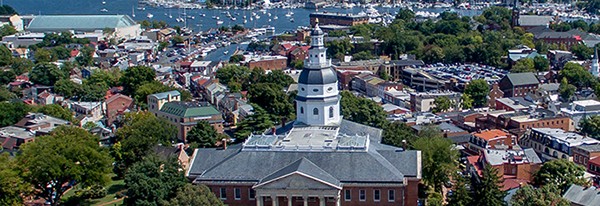Date:
I’ve been a baseball mom for many years, and we’ve had some great coaches along the way. A favorite coach often said – “you either win or you learn.” The recent decision by the Historic Preservation Commission (HPC) to approve the Mayor’s Maritime Welcome Center (MWC) was not a win.
While my colleagues, local community members, and I vigorously defended the integrity of the historic district and our interpretation of the City’s design guidelines, the HPC voted to approve the MWC, which is the final local approval needed to proceed with this building. So, what did we learn?
We learned there is a need to vigilantly advocate preservation best practices, well-established national standards, and the extraordinary importance of consistent review, regardless of the applicant. Much of the discussion at the HPC hearing related to whether the MWC was a new building or an addition.
The city pushed for classification as a new building – presumably because under HPC Guidelines, an addition must address the size of the construction relative to the historic resource (Burtis House) to be approved. The guidelines read: “Additions which compete with or obliterate an original structure will not be approved.” We strongly disagree with the position that the MWC is not an addition: the MWC sits on the same parcel, has the same address, is physically attached to Burtis, and the circulating pattern in the historic building is removed, thereby forcing the only access to the second floor through the addition.
The City’s easement application and the Maryland Historical Trust’s confirmed response both reference this as an addition. It’s an addition. Nonetheless, the HPC was swayed by the City’s position, and moving forward, the City preservation staff and mayor-appointed commission have now set a new precedent.
We learned that there is a lack of transparency in this public process. Dozens (over 60 according to staff testimony) of written comments were submitted online. The staff report issued the day before the meeting stated that the comments were 3:1 in opposition to the building as proposed. The public was not afforded an opportunity to see these comments, nor was the commission required to read them into the record. This is unacceptable in a process which is supposed to be open and transparent. This flaw was especially apparent with a project as high-profile as this.
We learned that our community is engaged and listening. People craved clear and concise information about the project which was not forthcoming from the City. We received countless emails, texts, and calls thanking us for our advocacy work, and we have had over 14,000 views of our City Dock videos. Our communication efforts were needed and valued. We are reminded that Annapolitans care deeply about our historic town, and I find that to be personally gratifying.
We learned we can claim a few successes– the building design was refined throughout the review process and the size was reduced 10 percent. The project team hopefully agrees that the design was strengthened with public input. And to be sure, within this project is real progress – a resiliency plan and elevated, open space. This is what HA supports.
Finally, we learned we need to better communicate the value that Historic Annapolis brings to the community. Retired County Executive Jim Lighthizer argues that the Annapolis historic preservation ordinance is the single most important piece of legislation passed in Anne Arundel County over the past 70 years, in terms of its influence as an economic driver and protector of the quality of life in Annapolis. He reminds me that the historic preservation ordinance passed unanimously, in all eight wards, precisely because the City and Historic Annapolis joined forces.
The present City administration, and some elected officials, have tried to devalue our role, spoken disparagingly about our organization and misrepresented what Historic Annapolis stands for. This only tells us that our need to communicate is ongoing, beyond the HPC meeting, and exists as part of our core mission to be the foremost champion of Annapolis’ historical integrity. The public needs to be reminded that we DO say yes to progress and that we have influenced change for the better of our community for close to 75 years.
That same coach used to also say “it’s all about hustle.” We have been hustling at Historic Annapolis! In addition to our advocacy work, we are gearing up for a wonderful spring. March is Women’s history month with some great public programs on the calendar. We are prepping for the Mother’s Day plant sale, celebrating the arrival of the Paca canns, introducing yoga in the garden, and getting excited about Maryland Day celebrations. Please, do come and spend some time with us.
PS – On behalf of all of us at Historic Annapolis, I would like to acknowledge the passing of Ted Mack, a lifelong preservationist, a fellow colleague on the Annapolis Heritage Commission, and an ardent supporter of and voice for Maryland Black history. I learned a great deal from Mr. Mack over the years, and we are deeply saddened by his loss.



